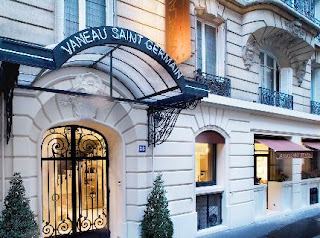
Many American writers have set their stories -- mystery or otherwise -- in the French capital, perhaps due to its beauty and mystery, but also because it has been long recognized, along with London, as a world capital of the literary and visual arts. So, what did 19th century Paris look like? It's easy to find out since much of 19th century Paris is still with us today.
Here are some places mentioned in "The Murders in the Rue Morgue" (remember: rue means road or street in French; quartier means neighborhood; faubourg means suburb)
Faubourg St. Germain
Located near the École des Beaux-Arts, this quarter is known for its artistry in general, and has many galleries along its rue Bonaparte and rue de Seine. In all, Saint-Germain-des-Prés is an upper-class bourgeois residential district, and its quality clothing and gastronomical street-side commerce is a direct reflection of this.
Rue St. Denis
One of the oldest streets in Paris, its route was first laid out in the 1st century by the Romans, and then extended to the north in the Middle Ages. From the Middle Ages to the present day, the street has become notorious as a place of prostitution. Its name derives from it being the historic route to Saint-Denis.

Rue de Richelieu
One of the longest streets in Paris, and for the first half of the nineteenth century, before Baron Hausmann redefined Paris with grand boulevards, it was one of the most fashionable streets of Paris. Today it is most notable for scattered coin dealers and currency changers, being near the stock market.



No comments:
Post a Comment
Note: Only a member of this blog may post a comment.